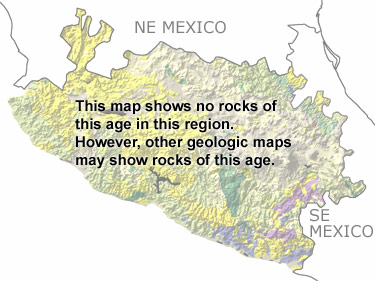Paleontology and geologyIn the Permian, Gondwana collided with Laurentia to form the supercontinent Pangea. This collision brought older sedimentary and igneous rocks from the coast of Gondwana to their present position in the Southwestern Region. The collision brought magma nearer to the surface, resulting in volcanoes and, after cooling, masses of granite. Some areas were pushed up while others were dropped down into basins. The land was covered with plants like cycadophytes and seed ferns, while shallow to deep seas filled the basins and covered the rest of the province. These seas were home to corals, sponges, brachiopods, bivalves, trilobites, bryozoans, echinoderms, gastropods, cephalopods, conodonts, bony fish, and sharks. In the ocean to the west, distant volcanic islands, destined to become part of the western portion of this region, were drawing nearer. Many Permian rocks have been eroded or buried, and the few remaining exposures are too small to appear on this map. Other more detailed maps may show them. |




